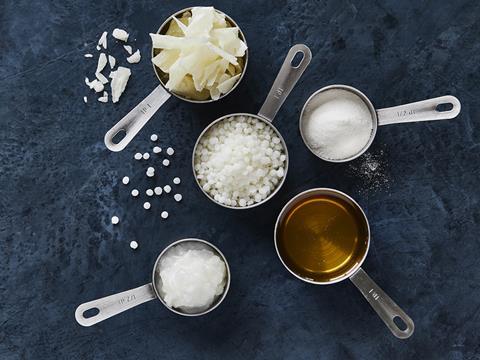
High-quality food-grade additives represent a sustainable solution as well as offering a range of functional benefits in packaging applications, writes Christina Normann Christensen, Product & Application Manager, Palsgaard.
The plant-based packaging revolution
The plant-based revolution hasn’t just increased demand for meat-free burgers and vegan moisturisers. A recent survey by the Plant-Based Products Council found that the majority of US consumers were receptive to the idea of packaging (as well as other products) made from plants.[i] Meanwhile, of course, brand owners in the food, cosmetics and other consumer markets are seeking effective ways to reduce their carbon footprints, and packaging manufacturers are under pressure to move towards more sustainable and closed-loop solutions.
While the movement towards the use of polymers from renewable, non-fossil and recycled resources is gaining momentum, “minor” components such as additives are still often overlooked. However, plant-based additives can help designers, converters and end-users of plastic packaging materials minimise the impact of their products on fossil depletion and waste. They also have a crucial effect on processing, handling and functionality, and provide major benefits over synthetic alternatives without compromising on food safety or end-of life recycling.
With a full range of food-grade and bio-based polymer additives built on more than 100 years of expertise in plant-based emulsifiers, Palsgaard can help meet these needs.
Dual roles: The journey from food to packaging
When Einar Viggo Schou invented the modern plant-based emulsifier in 1917, we can be confident he wasn’t thinking about packaging. Since then, products in the Palsgaard range have improved taste and texture in food categories like margarine and ice-cream, as well as extending shelf-life and allowing less resource-intensive production.
However, because of their fundamental ability to mix oil and water, our emulsifiers were later found to offer significant benefits in non-food applications. Products in the resulting Einar® range now serve as surfactants, dispersing aids, ageing modifiers, slip enhancers, coatings and mould release agents in polymer applications such as packaging materials. The surfactants are of particular benefit to the food packaging industry because they can reduce both fogging on the plastic material and the accumulation of static electricity. All the solutions in the range are plant-based and food-grade, making them safe enough to eat and overcoming growing consumer concern about harmful additives in polymer products.
As well as meeting food safety requirements, bio-based additives from edible plants can help minimise the overall additive concentration in the polymer formulation. This means that they have little – if any – impact on the recycling of post-consumer packaging ― an important consideration in an industry where circular solutions are increasingly demanded. Furthermore, they are not known to degrade into harmful compounds which might contaminate the recyclate, or promote discolouration or loss of properties.
The responsible choice
In chemical terms, our bio-based additives are glycerol and polyglycerol esters made exclusively from vegetable fatty acids. Their sources include certified palm oil, which provides the greatest yield per hectare, followed by rapeseed, sunflower, coconut and other vegetable oils. All Einar® additives are FDA- and EU- approved for food-contact applications. Produced in CO2-neutral factories, these renewable and animal-free additives are a perfect fit for innovative new responsible packaging solutions, and an excellent drop-in replacement for fossil-based additives in existing polymer formulations.
Typical applications are polyolefin (PE and PP) resins used in injection moulding, film and foam processing lines for a wide range of end-products from food packaging and food storage to non-food containers with durable anti-static and anti-fogging performance. They can also be used as ageing modifiers in PP and PE foams, slip agents in PET, PLA and other polyesters, coating powders for EPS, mould release agents, and pigment dispersants in colour masterbatches.
No fogging, no static, better dispersion
Transparent food packaging films and containers require long-lasting clarity to maintain the consumer appeal of the packaged product. However, various conditions of ambient humidity and temperature in these applications can cause the formation of condensation droplets and fogging on the inner surface, unless the packaging is made from a material modified with an effective anti-fog additive. Plant-based anti-fog additives cannot prevent the occurrence of moisture, but lower surface tension on the inside so that moisture spreads as a continuous thin film across the surface. As well as allowing a clear view of the food, this also protects its freshness and extends its shelf-life.
Another desirable function of surfactants in packaging materials is the prevention of static accumulation on the surface. Static electricity attracts dust and other fine particles, which means lower transparency and can make food appear unhygienic. Just as seriously, the build-up of static charges on plastic surfaces can result in problems during processing, conveying, stacking and packaging. For example, high static is known to reduce the rolling speed in film production, create handling problems during stacking, cause congestion on conveyor belts, and complicate the sealing of packages for powdery products. In the case of electronic goods packaging, it may even damage the product. As they migrate to the polymer surface, Einar® anti-static additives interact with ambient moisture to create a conductive layer which effectively dissipates the static electricity.
As liquid dispersion aids in colour masterbatches, bio-based additives enable a much cleaner and safer production process than traditional powdered waxes, and result in a more efficient distribution of the colour pigments. This in turn means that pigment loadings can be reduced to achieve the targeted colour strength, which saves cost, helps achieve faster colour changes and enhances the sustainability profile of both the masterbatch producer and the polymer.
A clear alternative
Bio-based additives are highly sustainable solutions that match or exceed the functional performance of conventional synthetic migratory additives. Safe enough to eat, they have become a clear and feasible alternative to fossil-based products. Combining sustainability credentials with uncompromising food safety and efficient performance, they offer brand owners, converters and end-users a superior and responsible choice.
[i] Plant-Based Products Council ‘New Research Reveals Massive Market Potential Exists for Plant-Based Products and Packaging’, December 10th 2020














